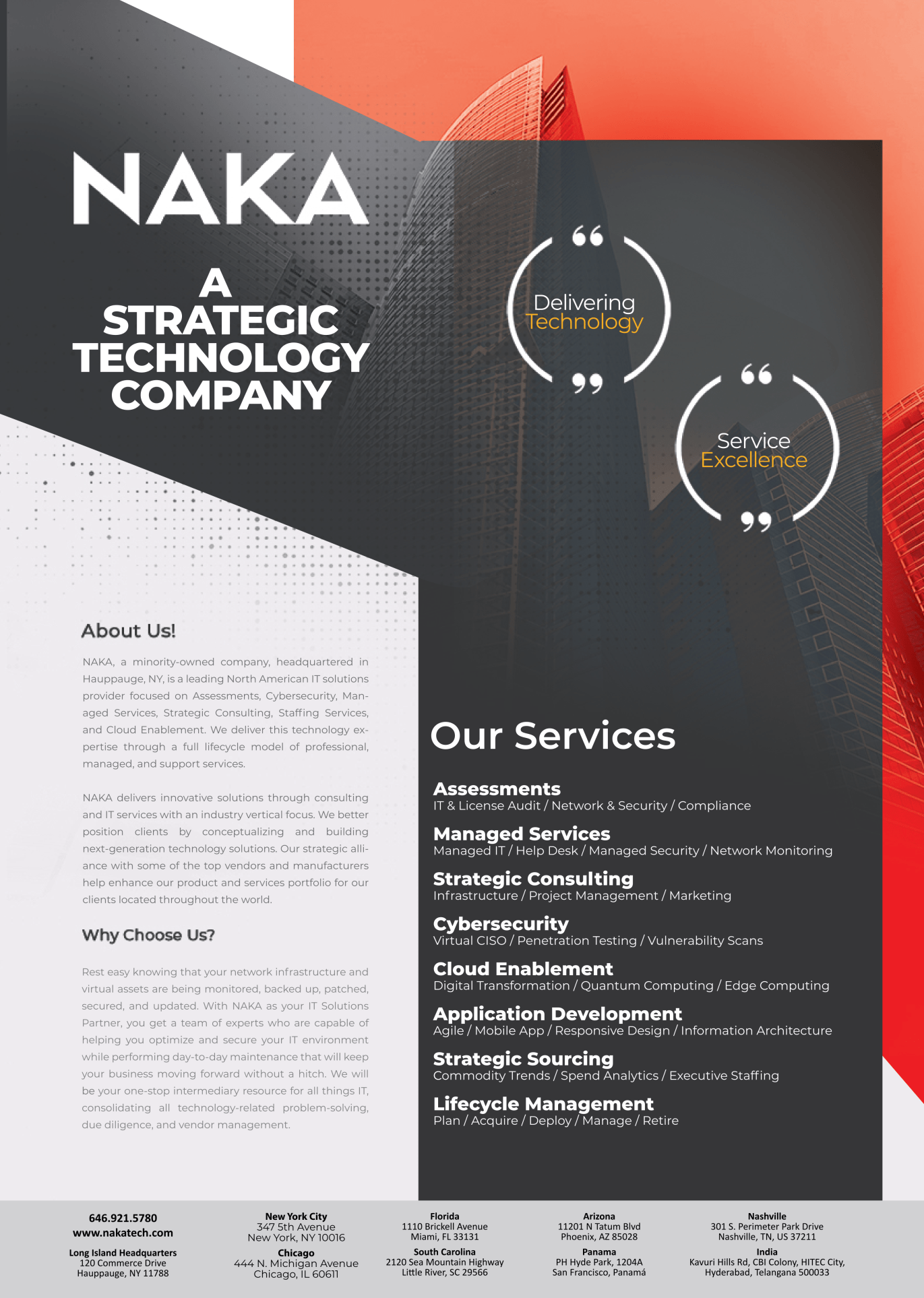Guide to Data Center Modernization: Key Steps and Benefits

Guide to Data Center Modernization: Key Steps and Benefits
Modernizing your data center is crucial in today’s fast-paced digital world. As businesses increasingly rely on data-driven strategies, having an up-to-date, efficient, and secure data center can make all the difference. This comprehensive guide will walk you through the key steps and considerations for data center modernization.
Why is data center modernization important?
Data center modernization is not just about upgrading hardware; it’s about transforming your entire IT infrastructure to be more agile, efficient, and secure. A modernized data center can enhance performance, reduce costs, and improve scalability, allowing your business to respond quickly to market changes and technological advancements.
Step 1: Assess Your Current Infrastructure
The first step in data center modernization is to thoroughly assess your existing infrastructure. Identify outdated hardware and software, evaluate current performance levels, and pinpoint areas where improvements are needed.
Key Questions to Consider:
- What are the performance bottlenecks in your current system?
- Are there any security vulnerabilities?
- How scalable is your current infrastructure?
- What are the operational costs associated with maintaining your current setup?
Conducting a comprehensive audit of your current infrastructure will provide a baseline that will help you plan your modernization strategy effectively.
Step 2: Define Your Goals
Having clear objectives is essential for a successful modernization project. Define what you aim to achieve with your data center modernization. Goals could include improving performance, enhancing security, increasing scalability, or reducing operational costs.
Examples of Modernization Goals:
- Reduce latency and improve data processing speeds.
- Improve data security and comply with industry laws.
- Increase storage capacity to handle growing data volumes.
- Optimize energy efficiency to reduce operational costs.
- Improve disaster recovery capabilities to ensure business continuity.
By setting specific, measurable goals, you can track the progress of your modernization efforts and ensure that they deliver the desired outcomes.
Step 3: Plan Your Modernization Strategy
Once you have defined your goals, develop a detailed modernization strategy. This should include a roadmap outlining the steps needed to achieve your objectives, timelines, and resource allocation.
Incorporating a data center modernization solution can be integral to your strategy, helping you to identify and implement the right technology upgrades, process improvements, and security enhancements.
Elements of a Modernization Strategy:
- Technology Upgrades: Identify new technologies and solutions that align with your goals. This may include cloud computing, hyper-converged infrastructure, or advanced storage solutions.
- Process Improvements: Streamline and automate processes to increase efficiency and eliminate the need for manual intervention.
- Security Enhancements: Implement advanced security measures to protect your data and infrastructure.
Developing a Roadmap:
- Short-Term Goals: Immediate improvements that can be implemented quickly, such as upgrading hardware or optimizing current systems.
- Medium-Term Goals: Projects that may take a few months to a year, such as migrating to a hybrid cloud environment or implementing HCI.
- Long-Term Goals: Strategic initiatives that align with your business growth plans, such as full cloud migration or advanced AI and machine learning integrations.
Step 4: Embrace Cloud Solutions
Cloud computing plays a pivotal role in data center modernization. By leveraging cloud solutions, you can achieve greater flexibility, scalability, and cost efficiency. Consider hybrid or multi-cloud environments to improve performance and maintain business continuity.
Benefits of Cloud Integration:
- Scalability: It is simple to scale up or down resources to satisfy demand.
- Cost effectiveness: Pay just for the resources you utilize, lowering capital costs.
- Business Continuity: Ensure data availability and disaster recovery capabilities.
- Innovation: Access to cutting-edge technologies and services that can drive innovation within your organization.
Types of Cloud Environments:
- Public Cloud: Services offered over the internet by third-party providers, suitable for scalable and flexible solutions.
- Private Cloud: Dedicated cloud infrastructure operated solely for one organization, offering enhanced security and control.
- Hybrid Cloud: Combines public and private clouds, allowing data and applications to be shared while providing the benefits of both environments.
- Multi-Cloud: Utilizing multiple cloud services from different providers to avoid vendor lock-in and enhance resilience.
Step 5: Implement Hyper-Converged Infrastructure (HCI)
Hyper-converged infrastructure combines computation, storage, and networking into a single system, which simplifies management and improves efficiency. HCI solutions help minimize your data center’s complexity while improving performance.
Advantages of HCI:
- Simplified Management: Centralized management of resources reduces administrative overhead.
- Improved Performance: Integrated systems optimize resource utilization.
- Scalability: You can easily add or delete resources as needed.
- Cost Savings: Reduce capital expenditures by using less hardware and improving operational efficiency.
HCI can also enhance disaster recovery and business continuity by providing robust data protection and rapid recovery options.
Step 6: Focus on Data Security
Data security is paramount in modernizing your data center. Implement robust security measures to protect against cyber threats and ensure compliance with industry regulations.
Key Security Measures:
- Encryption: To safeguard sensitive information, encrypt data both at rest and while in transit.
- Access Control: Use stringent access controls to limit who has access to important systems and data.
- Regular Audits: Perform frequent security audits to discover and remedy issues.
- Endpoint Security: Protect endpoints with advanced security solutions to prevent breaches.
- Backup and Recovery: Ensure regular backups and establish a reliable recovery process to safeguard against data loss.
Compliance and Regulation:
Keep up with the newest industry rules and compliance needs. Ensuring that your data center meets these standards will not only protect your organization but also build trust with your customers and partners.
Step 7: Optimize for Efficiency and Sustainability
Modernizing your data center should also focus on improving energy efficiency and sustainability. Implement energy-efficient technologies and practices to reduce your carbon footprint and operational costs.
Strategies for Efficiency:
- Energy-Efficient Hardware: Use servers and storage solutions designed for low power consumption.
- Cooling Optimization: Implement advanced cooling techniques to reduce energy use.
- Virtualization: Maximize resource utilization through virtualization to reduce the number of physical servers needed.
- Power Management: Use power management tools to monitor and optimize energy usage across the data center.
Sustainability Practices:
- Green Data Centers: Design data centers with sustainable practices, including the use of renewable energy sources.
- E-Waste Management: Implement responsible e-waste disposal practices to minimize environmental impact.
- Carbon Footprint Reduction: Monitor and actively work to reduce the carbon footprint of your data center operations.
Conclusion
Data center modernization is a multidimensional process that necessitates meticulous planning and execution. You can turn your data center into a contemporary, agile, and safe environment by reviewing your present infrastructure, creating clear goals, adopting new technologies, and prioritizing security and efficiency. This not only meets your present business needs, but also prepares you for future development and technology advancements.
Nakatech specializes in strong data center upgrading solutions. By teaming with Nakatech, you may benefit from our expertise in ensuring a smooth transition to a modernized data center that improves performance, lowers costs, and increases overall company agility. Investing in modernization now helps ensure that your data center can handle the expectations of tomorrow’s digital environment.



